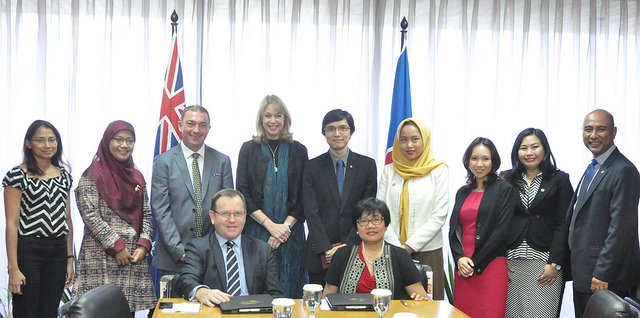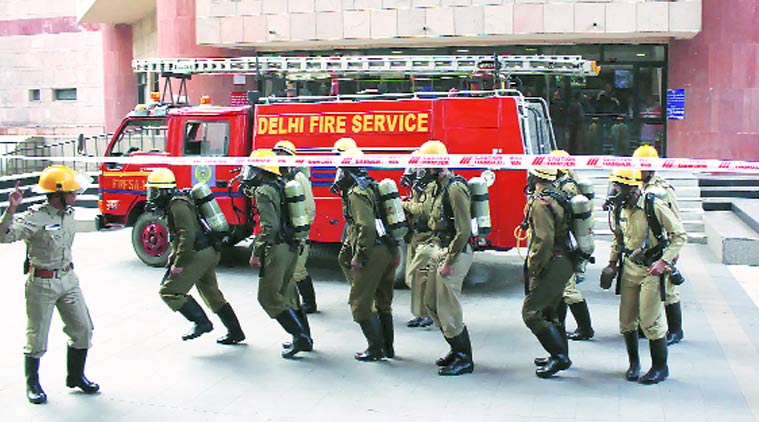
JAKARTA, 19 May 2015 – ASEAN Deputy Secretary-General for Socio-Cultural Community, H.E. Alicia Dela Rosa Bala and Australia’s first resident Ambassador to ASEAN, H.E. Simon Merrifield, today signed Amendment No. 6 to the Cooperation Arrangement between ASEAN and the Commonwealth of Australia represented by the Australian Department of Foreign Affairs and Trade on the ASEAN Agreement for Disaster Management and Emergency Response (AADMER) Work Programme 2010-2015 at the ASEAN Secretariat.
DSG Bala expressed appreciation to Australia for its steadfast assistance to ASEAN Community building efforts, especially in the area of disaster management, which is one of the areas of priority collaboration under the Plan of Action (POA) to implement the Joint Declaration on ASEAN-Australia Comprehensive Partnership (2015-2019). “Australia has provided much needed support for the implementation of priority projects under the strategic components and building blocks of the AADMER Work Programme, such as capacity building for our ASEAN Emergency Response and Assessment Team, establishment of the ASEAN Disaster Management Training Institutes Network and most importantly, the operationalisation of the ASEAN Co-ordinating Centre for Humanitarian Assistance on disaster management (AHA Centre),” she said. “Through the Cooperation Arrangement, Australia has also supported ASEAN's strategic initiatives, including a lessons learned exercise of ASEAN's post-Haiyan's response, and providing the capacity needed for ASEAN's efforts in building cross-sectoral and multi-stakeholder collaboration,” DSG Bala added.
Meanwhile, Ambassador Merrifield reiterated Australia’s commitment to strengthen its cooperation with ASEAN on disaster management. “Australia has supported the implementation of the AADMER and the establishment of the AHA Centre from the beginning, and the signing today, extending our support until the end of 2016, demonstrates our commitment to using regional solutions to prepare and respond to disasters, and our recognition of ASEAN’s importance in this regional role,” said Ambassador Merrifield.
“I congratulate the ASEAN Secretariat and the AHA Centre for their strong and effective leadership, and for the significant support they have made to assist ASEAN Member States to improve their own response capabilities across the region,” Ambassador Merrifield added.
Australia, which became ASEAN’s first dialogue partner in 1974, was also one of the earliest partners to pledge its support for the implementation of the AADMER Work Programme at the AADMER Partnership Conference held in May 2010 in Makati City, the Philippines. This commitment was subsequently formalised through the signing of the Cooperation Arrangement on 9 August 2010. Since then, the Cooperation Arrangement has been amended to extend the assistance up to 31 December 2016, and reflects a total contribution of AUD 4,565,000.





